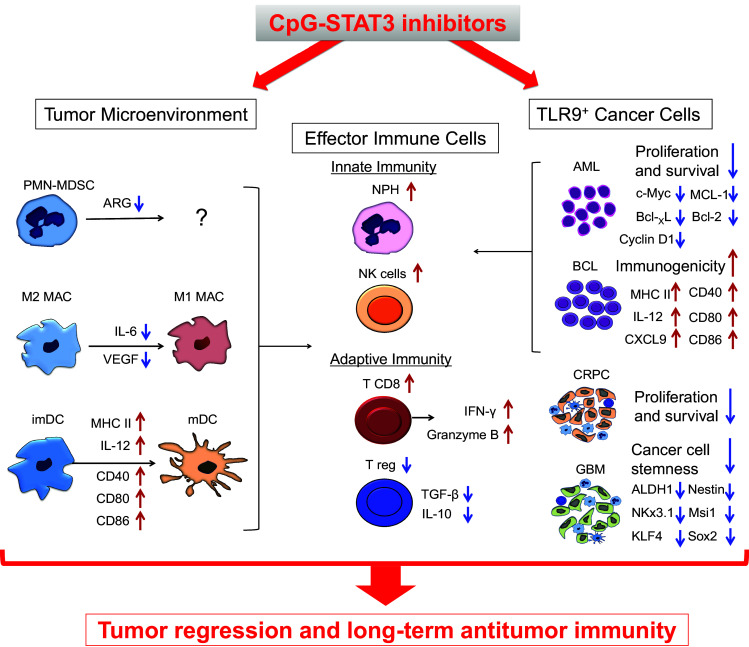Fig. 2.

Two-pronged therapeutic effect of CpG-STAT3 inhibitors against TLR9-positive human cancers. TLR9-targeted delivery of STAT3 inhibitors allows for targeting both TLR9-positive tumor-associated myeloid cells (imDC immature DC, MAC macrophages, PMN-MDSC polymorphonuclear myeloid-derived suppressor cells) as well as certain human cancers, such as castration-resistant prostate cancer (CRPC) and glioma (GBM). TLR9-activation/STAT3-inhibition in the tumor microenvironment reduces production of immunosuppressive mediators by myeloid cells while stimulating DC and MAC maturation and promoting presentation of tumor-specific antigens and release proinflammatory mediators. While CpG-STAT3 inhibitors alleviate immunosuppressive functions of PMN-MDSCs, it is yet unclear whether these effects are accompanied by loss of viability and/or differentiation of MDSCs. At the same time, CpG-STAT3 inhibitors can increase immunogenicity of cancer cells in AML and B cell lymphoma, while decreasing survival and tumorigenic potential of cancer stem-like cells in CRPC and GBM. The combination of breaking immune suppression in the tumor microenvironment and decreasing cancer cell survival is likely to augment the overall therapeutic efficacy against human TLR9-positive cancers
